 With Microsoft’s release of the Surface Tablet there’s some conjecture as to whether a company best known for their software can develop and market a hardware based product. Perhaps it’s appropriate at this time to reflect on the Microsoft’s history in hardware development, especially given that it’s the 30th Anniversary of Microsoft Hardware . Microsoft has been in the hardware game for quite a while now though it’s certainly not what they’re best known for.
With Microsoft’s release of the Surface Tablet there’s some conjecture as to whether a company best known for their software can develop and market a hardware based product. Perhaps it’s appropriate at this time to reflect on the Microsoft’s history in hardware development, especially given that it’s the 30th Anniversary of Microsoft Hardware . Microsoft has been in the hardware game for quite a while now though it’s certainly not what they’re best known for.
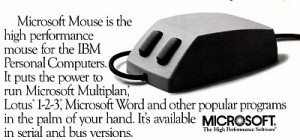 Microsoft Hardware was a group created in 1982, their prime project to create a mouse to be used with Microsoft’s Word product, a project that was completed in 1983.
Microsoft Hardware was a group created in 1982, their prime project to create a mouse to be used with Microsoft’s Word product, a project that was completed in 1983.
Actimates
 In February 1997 , Microsoft released a range of interactive toys based on licensed characters that could interact with VHS videos or the TV . The toys were discontinued in 2000.
In February 1997 , Microsoft released a range of interactive toys based on licensed characters that could interact with VHS videos or the TV . The toys were discontinued in 2000.
Cordless Phones
In 1999 Microsoft released the MP-900, a cordless phone that was designed to integrated with your PC and give you a full Windows-based call management systems, voicemail, call screening and voice control were just some of the functions that it brought to the table.
Microsoft Broadband Networking 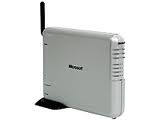
Between 2002 through 2005, Microsoft produced a range of networking products . In September 2002 they released the MN-5XX range of products based on the 802.11b standard. The range included a wireless router with a 4 port ethernet hub and USB and PC-Card Network Adapters. By January 2003 it was estimated the products were in the number two position in US retail sales for Wi-Fi products primarily because of their ease of setup. In September 2003 they released the MN-7XX series based on 802.11g however increased competition and lack of comparative features saw the range discontinued in May 2004.
The Xbox was released in Northern America in November 15, 2001 with the integrated Xbox Live service launched in November 2002 allowed players to play games online. Discontinued in late 2007, the new XBox 360 was released in November 2005. The Xbox was based on standard PC Hardware and was the first video game console to feature a built-in hard disk drive, for storing game save data and content downloaded from Xbox Live. The XBox 360 is still a current product line for them with the announcement of the upgraded X360S in September 2010. Microsoft has stated that they believe that the XBox is still only mid-way through its life-cycle.
ZUNE
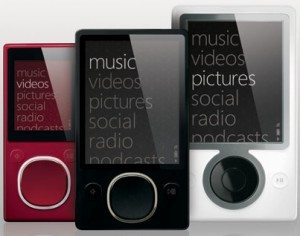 In 2006, Microsoft released the Zune, a digital media player and on-line store which also integrated with their Zune Software. In October 2011, Microsoft discountinued the hardware line and in June 2012 discountinued the Zune brand, rebranding their software service.
In 2006, Microsoft released the Zune, a digital media player and on-line store which also integrated with their Zune Software. In October 2011, Microsoft discountinued the hardware line and in June 2012 discountinued the Zune brand, rebranding their software service.
Mice, Webcams, Headsets and Keyboards
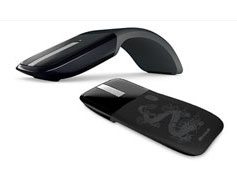 From humble beginnings of creating a mouse 30 years ago, Microsoft Hardware’s most popular and successful lines is still in that peripheral market, primarily their wireless mice, keyboards, headsets and webcams. Their current lineup has evolved into a wide range of products from both a price and function point of view. Who here remembers having to regularly clean the dirt and lint out of their mouse ball and who here remembers going from their standard keyboard to a Natural Keyboard and back again ? 🙂
From humble beginnings of creating a mouse 30 years ago, Microsoft Hardware’s most popular and successful lines is still in that peripheral market, primarily their wireless mice, keyboards, headsets and webcams. Their current lineup has evolved into a wide range of products from both a price and function point of view. Who here remembers having to regularly clean the dirt and lint out of their mouse ball and who here remembers going from their standard keyboard to a Natural Keyboard and back again ? 🙂
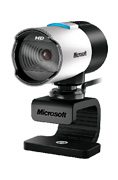 Made to enhance the full communications experience, they tout their products in the consumer space with things like Skype certification and also for business use with their own product like Lync: “Microsoft’s LifeCam webcams and LifeChat headsets are part of a Unified Communications approach that helps you save on travel costs and communicate more clearly. With Microsoft Lync it takes just one click to make a call, and another to add video.” Reports from colleagues on their new 720P and 1080P webcams have been good and I’ve had the pleasure of playing with one of their new Arc Touch Mice recently and dare I say it but it is “sexy” 🙂
Made to enhance the full communications experience, they tout their products in the consumer space with things like Skype certification and also for business use with their own product like Lync: “Microsoft’s LifeCam webcams and LifeChat headsets are part of a Unified Communications approach that helps you save on travel costs and communicate more clearly. With Microsoft Lync it takes just one click to make a call, and another to add video.” Reports from colleagues on their new 720P and 1080P webcams have been good and I’ve had the pleasure of playing with one of their new Arc Touch Mice recently and dare I say it but it is “sexy” 🙂
Occupational Health and Safety Regulations and increased mobility have meant that the peripherals have also had to evolve to meet consumer needs, I mean most of us use these for many hours every day.
Conclusion
While not an entire history of all hardware Microsoft has put out, you can see that their hardware business has had a larger breadth than most people are aware of until you put them into one place. Some have been successful and other not quite so much 🙂 Whether the success or failure of any of their products is due to the product, implementation or release timing can be debated. From their origins 30 years ago however Microsoft Hardware’s core and “bread and butter” products has still remained peripherals like their mice, keyboards, headsets and webcams.
It’s worth noting here that this isn’t Microsoft’s first foray into “controlling” Windows tablets. In 2001 Microsoft set a set of hardware specifications for hardware vendors to follow to run Windows XP Tablet PC Edition, compliance meaning you could designate your tablet as a “Microsoft Tablet PC”.
Personally I think that with the Surface Tablet Microsoft has once again followed its “Eat your own dogfood” philosophy and have developed a product inhouse that they believe is required to give users a full Windows Tablet experience as they envisage it. Their vision for both Microsoft Tablet PC or Windows 7 tablets never took off , partly due to OS inappropriateness for a tablet device and partly because of the inappropriate hardware platforms released by hardware vendors given the constraints of the OS. By giving us their own total product, they take away any barriers that may be placed on the take up due to actions by third-party hardware vendors. It’s almost an Apple like strategy 🙂
Unlike Apple however, the software platform will also be offered to third-party hardware vendors as well. If Microsoft has their own vision right then in my opinion this will mean that other hardware vendors will need to exceed and innovate the features of their Windows 8 tablets in comparison. Competition in the Windows 8 tablet space will drive the price down and that has to be good for the consumer 🙂
As a last note I believe that uptake in the corporate world where native integration into existing (Microsoft) systems is of primary importance,will mostly likely be completely different to uptake in the the consumer market.
Your thoughts? Has Microsoft got it right? Can they pull off the hardware side of things? Are they too late to market? Will Surface be to iPad as Zune was to iPod? 🙂 Will you be buying one?

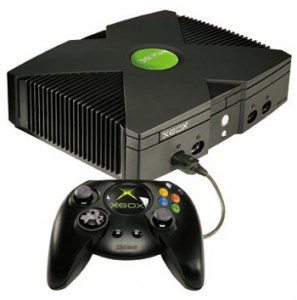
Gadgeteer Comment Policy - Please read before commenting
I think it is going to be very interesting to see what a surface tablet will be like. I am going to wait like I did with the Zune. The Zune HD is still better than the Ipod touch. I don’t usually carry a bunch of apps around specifically because I have a job, kids and a life really, and the only reason my tablets get cluttered is due to the short life-span of most games in either mobile system. If the Surface tab continues the Zune experience properly, it will be a useful, and if it can have enough apps to stop the IDIOTIC statements from apple slaves well it only runs all of the necessary apps but it doesn’t have s bigillion useless apps so it isn’t as good as (cr)apple. Then I will consider it a win. I don’t have a tablet to play angry birds or cut the rope, or Instagram. I have it a tool to look at websites, read and answer emails, create documents, and other items and read documents.
I believe MS is focusing primarily on business users these Surface tablets.
Note for example they are only releasing two versions that cover the two extremes of basic and high end, with nothing covering the mid range.
The Windows RT version will for example have MS Office and Student 2013 RT included by default. Something that helps alleviate the fact there won’t be any 3rd party desktop apps for Windows RT but also helps ensure that business users will have the core apps they are most likely to need to be productive.
While the Pro version skips over the basic Windows 8 and goes to the higher end Windows 8 Pro and a Core i5 processor that’s perfectly capable of running Autocad, Photoshop, etc. and serve as a potential laptop replacement. So both are essentially focused on being productive and don’t really bother with anything in between.
Then consider how the tablets are designed with elements like the use of Magnesium, which is more costly to use than plastic or aluminum and is usually reserved for business systems like Lenovo Thinkpads. Or how they emphasized that the hinge of the built in stand was made to sound like a luxury car door opening and closing is also something normally associated with a premium business device offering.
So while the Surface will serve as a much needed kick in the pants to MS partners to get more serious or else, but also seems primarily focused on appealing to business users where MS is probably most concerned about losing market share as more and more business have started to adopt tablets for various reasons.
The Surface can also helps serve as a baseline for Windows tablets like Google’s Nexus serves for the Android market.
For example, Surface tablets won’t come bogged down with bloatware as they will be clean Windows 8/RT installs. Along with minimal compromising build quality at a time that many are starting to cut too many corners.
So should hopefully help to both provide a boost to the re-invented Windows tablet market as well as finally get companies to really compete and start providing consumer the best possible products.